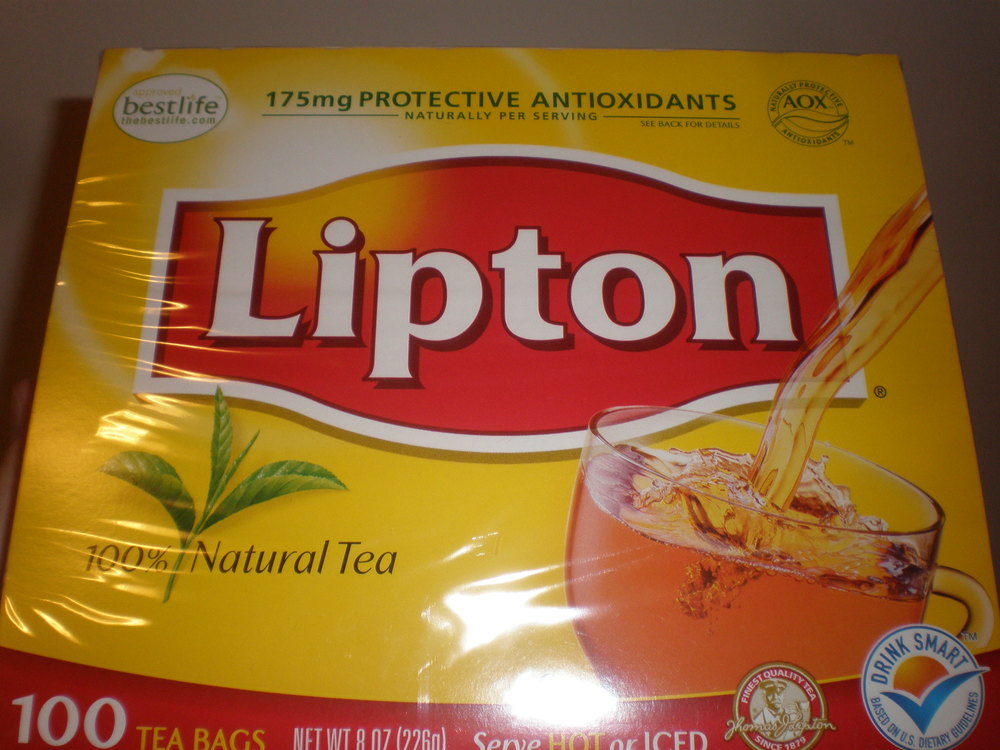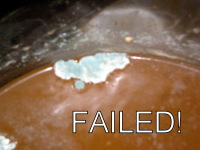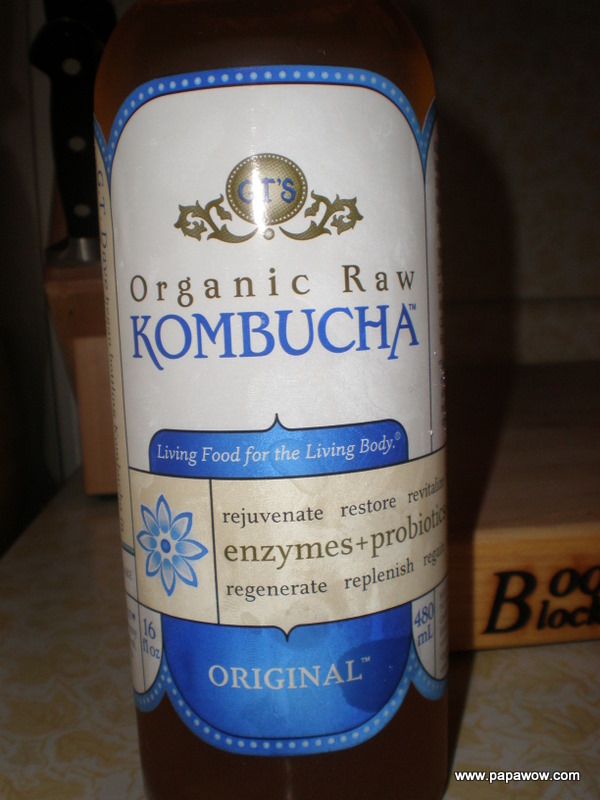
Kombucha is so hot right now. With the popularity of Kombucha syrocketing, I tried making some from scratch (note: do not try this at home, I am a professional, and an idiot, and I can eat damn-near anything without getting sick).
I've been brewing beer for almost 15 years, I make my own vinegar; the former is yeast, the latter is acetobacter - kombucha, however, is both...
When I tell you that Kombucha is "so hot right now" I'm not joking. According to the NY Post, Lindsay Lohan and Kirsten Dunst are drinking it (they postulate for it's supposed detoxifying properties) and Marie Claire UK says Halle Berry, Madonna, and Meg Ryan have been drinking it too.
So hot.
One of the most popular brands (seen here) is GT Dave's. It is 'sprouting' up at more than just health food stores; I've seen it at deli's and corner stores. There are now 13 flavors and if you are a novice, I suggest the Gingerade or one of the Synergy flavors first (they have fruit juice added).
Let's back up. Kombucha dates back more than 2000 years and it is a symbiotic relationship between a yeast culture and a bacteria culture (mostly acetobacters) simultaneously fermenting sweetened black or green tea. This culture takes shape as a rubbery-gelatinous disk that hovers in the tea as it goes through fermentation.
The disk is referred to as a SCOBY, a 'Symbiotic Culture Of Bacteria and Yeast'. As the yeast is consuming the sugars and turning them into carbon dioxide and ethanol - the bacteria is turning the ethanol into acetic acid (vinegar). The result? Kombucha is a sweet, tangy, carbonated, iced tea. How sweet, tangy, and carbonated it ends up varies from batch to batch.
People sell Scoby's online and I read about several people starting their own culture from a bottle GT Dave's - my hubris takes over and I decided to experiment. I make two batches, I try to cultivate one from the store bought kombucha, the other I try to Frankenstein.
I start by making tea using 'good ole' Lipton's black with 7 tea bags. I add a cup of plain white sugar, dissolve it, and divide it into two.
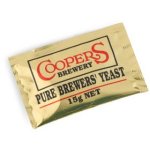 I add one 15g packet of Coopers Brewers' Yeast and one 16oz. bottle of Bragg's Organic Raw Apple Cider Vinegar (unfiltered, unpasteurized) to the brew and label it #2.
I add one 15g packet of Coopers Brewers' Yeast and one 16oz. bottle of Bragg's Organic Raw Apple Cider Vinegar (unfiltered, unpasteurized) to the brew and label it #2.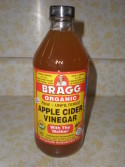
To batch #1, I add a 16oz. bottle of GT Dave's Original.
I wait.
After one week, there is action in #2 (The Frankenstein); there is a film beginning to cover the surface and a distinct vinegar aroma taking over the kitchen. There is nothing going on in #1. Frankenstein is far cloudier than #1, far more pungent, and there are obvious signs of fermentation going on - effervescence, things floating around, and its appearance changes with every glance...
I'm making something here, but at this point I'm not sure what.
Weeks two, three, and four go by. The action in Frankenstein plateaus at about week 5. Meanwhile, there is still nothing much going on in #1. Maybe some bigger lumps, or maybe not; maybe those were there before... I'm bored with #1. Frankenstein however, is alive. It's alive! Week six comes and I contemplate botteling when...
Mold!
"The Literature" suggests this is a result of the Ph not dropping quickly enough (becoming acidic) and thus allowing spores to propagate. I also read that although the acetobacters in the Bragg Apple Cider Vinegar may be similar to a Kombucha scoby, the yeast strains are quite different.
I won't get into technicalities here (because I'd likely be called out by a real Biologist) but the resulting brew got poured down the drain. I will write more with the results of the other later.
"You seek for knowledge and wisdom, as I once did; and I ardently hope that the gratification of your wishes may not be a serpent to sting you, as mine has been." - Mary Shelley, Frankenstein

